How to Use a Safety Razor: Everything You Need to Know, with Expert Advice
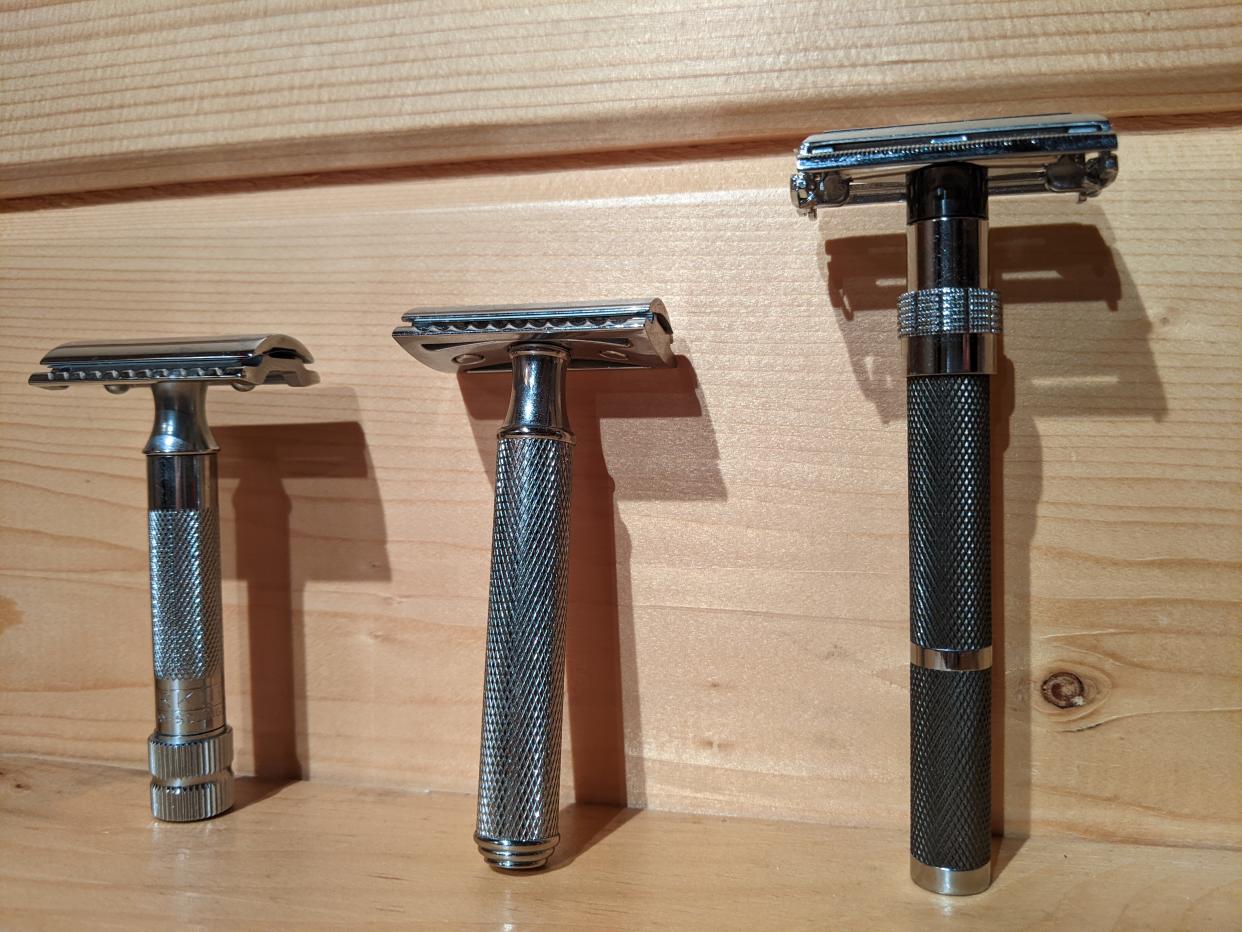
The biggest impediment to doing anything new and different is knowledge. If you don’t know what you’re doing, you’re never going to try it, and that includes many aspects of grooming. That’s why we want to tell you everything you need to know about how to use a safety razor.
To help us explain, we reached out to Soren Roi, a senior barber at Fellow Barber in New York City and an educator at FB’s Apprentice Academy.
Today's Top Deals
Get Outdoors With Boulder's Badminton and Pickleball Net, Up To 55% Off
No Smart TV? No Problem. Amazon's Latest Fire TV Stick 4K Is 40% Off
Why use a safety razor?
We’ve tested lots of razors over the years, whether cartridge, disposable, safety, straight or electric. And when you factor together everything you want out of a shave, safety razors simply deliver. They offer great precision and closeness, they tend to shave more consistently than multi-blade razors, they’re incredibly affordable to use in the long run and they’re way easier to use than straight razors.
“Safety razors are great for beginners because they set the blade at the correct angle for shaving, as well as have a weighted head which helps to pull the razor along,” Roi explains. “Safety razors are [also] much cheaper than disposable razors … and they are also better for the environment since they cut out all that plastic that just gets thrown away.”
Plus, many people find that the single blade of a safety razor irritates their skin less than multi-blade razors, Roi adds.
Given the benefits and the learning curve of safety razors, we’ll explain everything you need to know about safety razors below, including their components, how to assemble them and how to use them to get consistently great shaves. Once we’ve walked you through how to use a safety razor, we’ll dive into our favorite safety razor, razor blades and shaving cream to help you make the switch.
The components of a safety razor
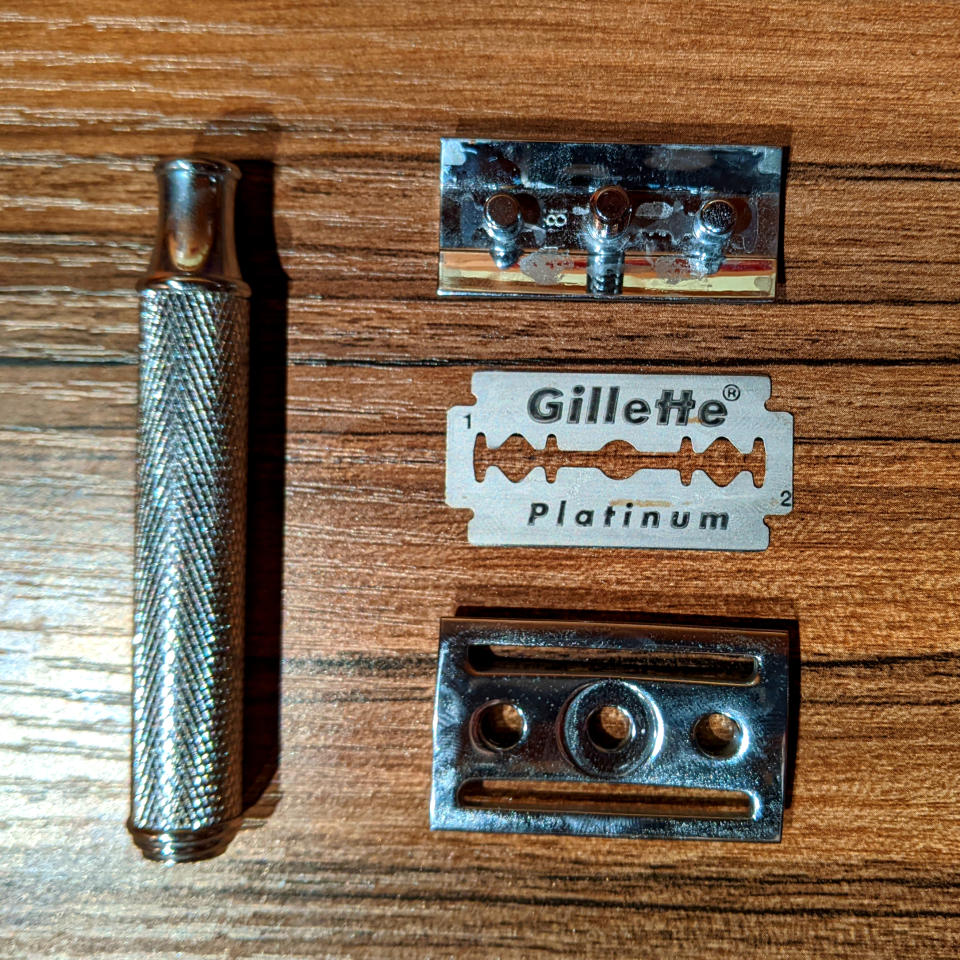
A safety razor is remarkably simple, and the vast majority have only three metal parts, not counting the razor blade itself. (Some razors only have two!) There is the handle and the head, which consists of a top and a base.
The top and base hold the razor blade between them and screw together to the top of the razor handle, securing the blade and bending it to a slight angle. “The head of the razor has a top and bottom piece, which are both concavely shaped and should have a nice weight to them,” Roi says. “This shape bends the razor to the perfect angle, making shaving much easier compared to a straight razor, where the angle of the razor is controlled by the angle of your hand while shaving.”
A weighted head is key for safety razors in that it makes shaving thicker stubble easier, with the weight of the razor doing most of the work.
As for the handle, handles tend to be heavier, thicker pieces of metal and usually feature some kind of knurling or engraving to help improve grip and minimize slippage.
Lastly, the vast majority of safety razors make use of a double-edge disposable blade, which is held between the top and base and ultimately screwed together onto the handle. That means you get two sharp edges every shave. Oftentimes, you can even reuse the same blade, but Roi recommends replacing it every time for best results. (For even more depth on the features of safety razors, check out our review of the best safety razors.)
How to assemble a safety razor and change blades
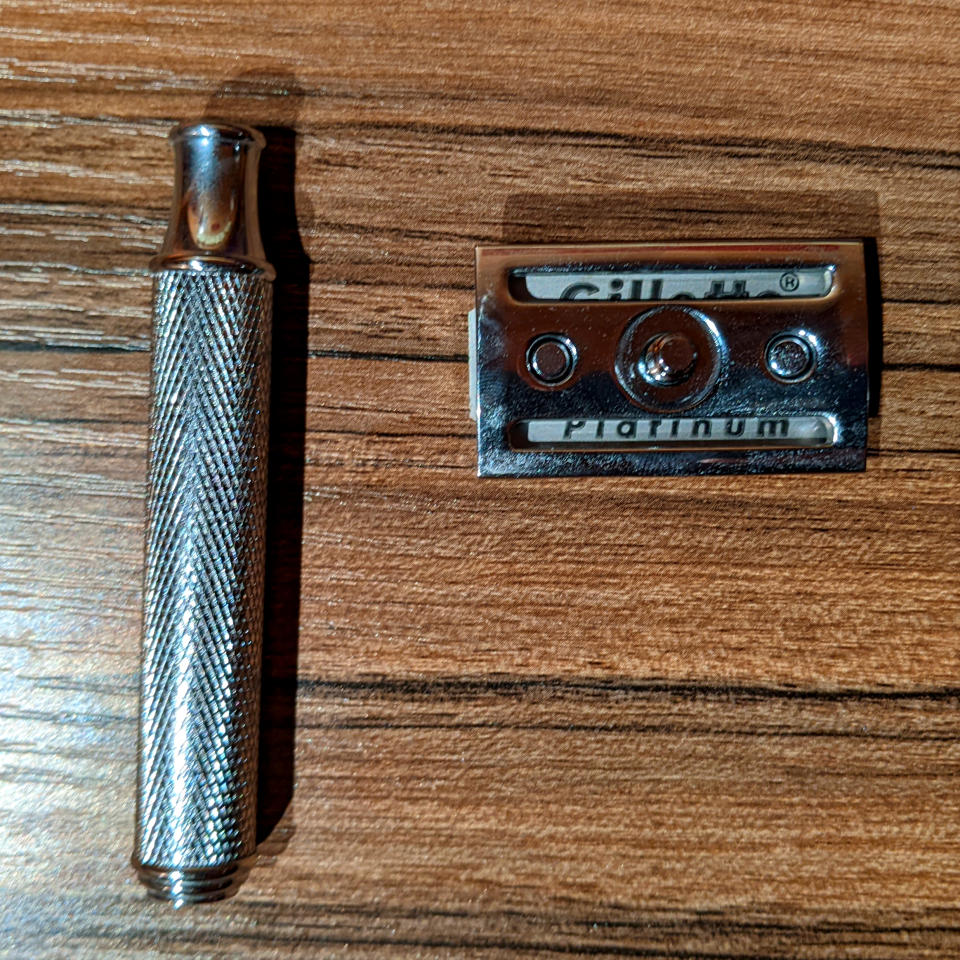
Assembling most safety razors is as easy as unscrewing the three components, sticking a blade in between the top and base, and screwing everything back together. Swapping a new blade just involves the extra step of pulling out the old blade.
Typically, all you have to do is grab the handle, press the head against a safe surface that won’t get cut to avoid injury and twist the handle until the head pops off.
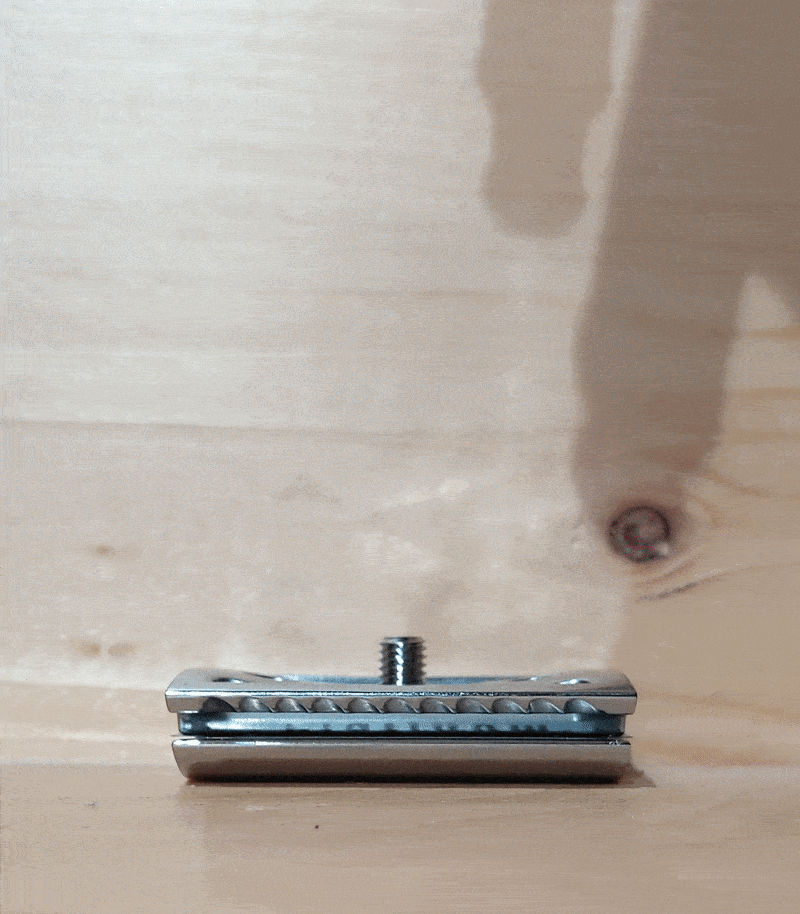
If that sounds a little risky, it is (granted not that much). However, even that minimal risk has solutions. Some safety razors feature a knob at the bottom of the handle that unscrews the head, allowing you to avoid having to touch the head until it pops off.
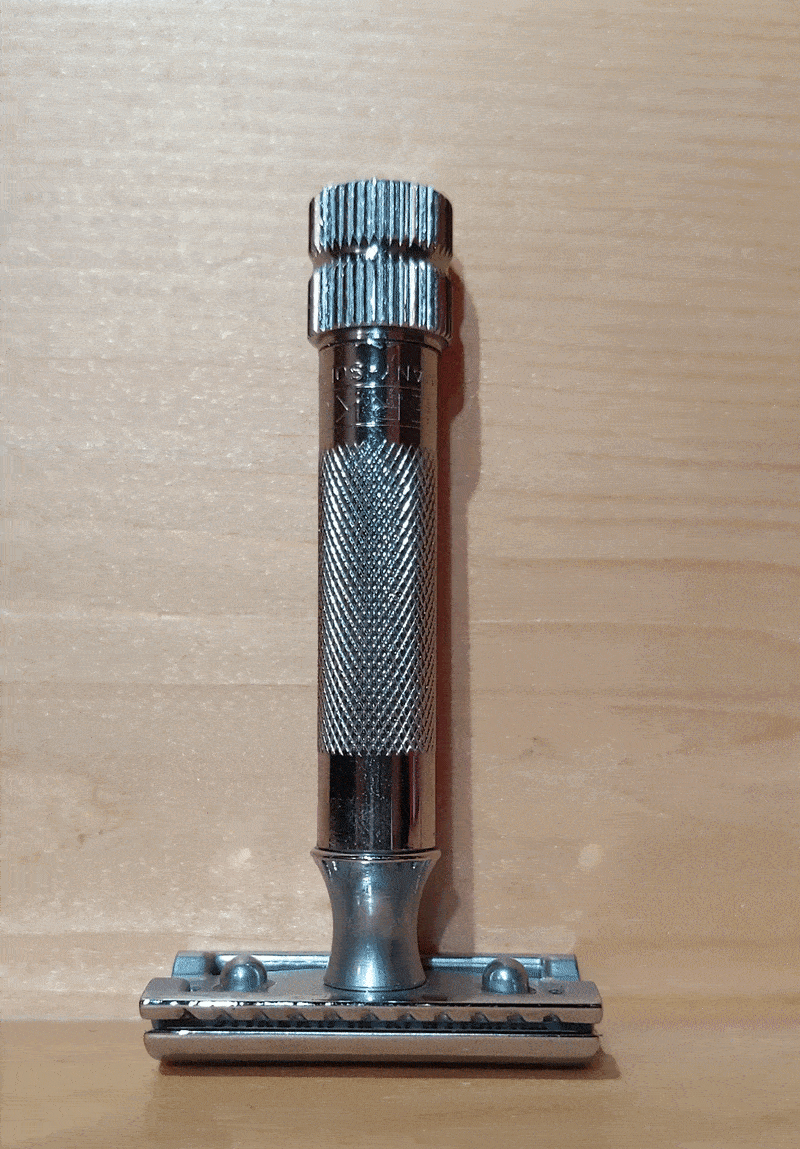
Other razors use a more complicated mechanism to change blades, the twist-to-open or butterfly mechanism. “The heads of these razors open up without detaching from the handle and can be a bit easier to handle, but are more fragile and prone to breaking than the traditional safety razor, which is practically indestructible,” Roi says.
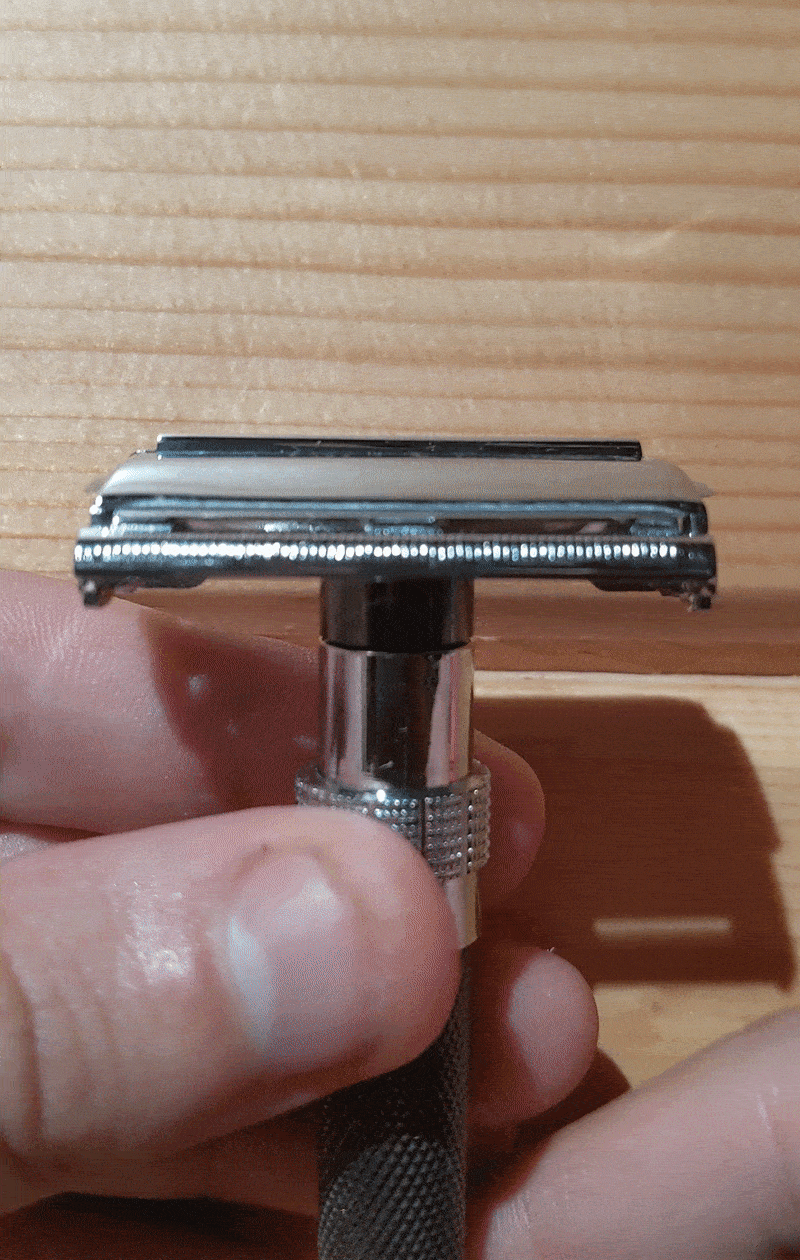
In short, butterfly openings look cool and add a little more safety into the razor-changing mix but they do complicate the razor’s design.
In terms of blades, the most important thing is safe disposal. You want to make sure you’re storing used blades safely for your own safety, and some communities have rules and restrictions about disposal of razor blades for the safety of sanitation workers. You can wrap up the old blade in the paper of the new blade, stick it in a blade disposal case or simply use any secure tin lying around, like an Altoids tin.
How to use a safety razor
Now that we’ve covered the basics of safety razors and how to assemble them, let’s dive into how to use a safety razor and what you need to know and do before shaving.
Make sure you’re shaving with the grain to start. Shaving against the grain is more difficult and can lead to more skin irritation and ingrown hairs, so it’s best to shave in the direction your hair grows at first.
Start slow. If you’re a beginner, don’t rush. There’s no extra credit for speed and you just might end up with a nasty cut if you’re not careful. While you’re thinking about safety, never, ever move the razor side to side. That is literally how cuts happen.
Apply a pre-shave oil and/or shaving cream. “Make sure your facial hair is softened with hot water and lubricated with pre-shave oil and shaving cream,” Roi says.
Hold the razor at a 30-degree angle to your face and begin taking small strokes. “Pay attention to the feeling of resistance against the razor; there should be some, but not too much, and if the razor feels stuck against your skin, don’t force it,” Roi recommends. For beginners, we’d recommend keeping your wrist stable and just trying to move your arm up and down to complete your strokes.
Let the razor do the work. Safety razors generally have a heftier weight to them because the added weight helps shave through the hairs. It also takes some guesswork out of how much pressure you need to apply, which isn’t very much for most safety razors.
Rinse the head after every stroke. Safety razors unclog a million times more easily than cartridge razors, which helps make them more consistent.
Flip to the razor’s other side after rinsing. Switching sides can minimize stress on the blades and give you a fresher edge for each stroke.Clean up with warm water and apply an aftershave balm. Additionally, we recommend a cold compress before applying aftershave balm because the cold water helps close pores and address any immediate razor burn sensation.
That’s it, you’re done! Some people need or prefer to take a second pass against the grain. While that’s the ultimate end goal for an optimal shave, beginners should shave a few times before attempting.
Now that we’ve told you how to use a safety razor, let’s check out SPY’s favorite safety razor, razor blades and shaving cream. We’ve tested them all and they’re all great for shavers of any skill level.
1. The Art of Shaving Safety Razor
BEST SAFETY RAZOR
The Art of Shaving Safety Razor is just an all-around great safety razor. It delivers smooth, clean shaves, feels great to wield and works just as well for beginners as it does for pros. Plus it ships with five high-quality Gillette razor blades to get you started.
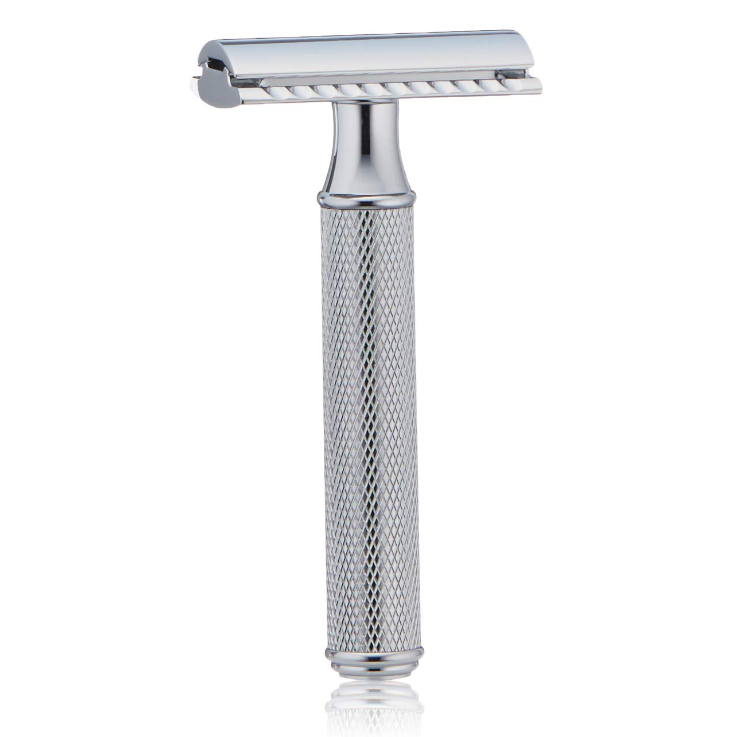
The Art of Shaving Safety Razor
2. Astra Platinum Double Edge Safety Razor Blades
BEST RAZOR BLADES
The Astra Platinum Double Edge Safety Razor Blades should be where everyone starts. Though other razor blades might be sharper or more durable, the Astra blades are all-around great blades for beginners or experts. Not to mention, they’re extremely wallet-friendly, which is why I’ve been shaving with Astra blades for over a decade.
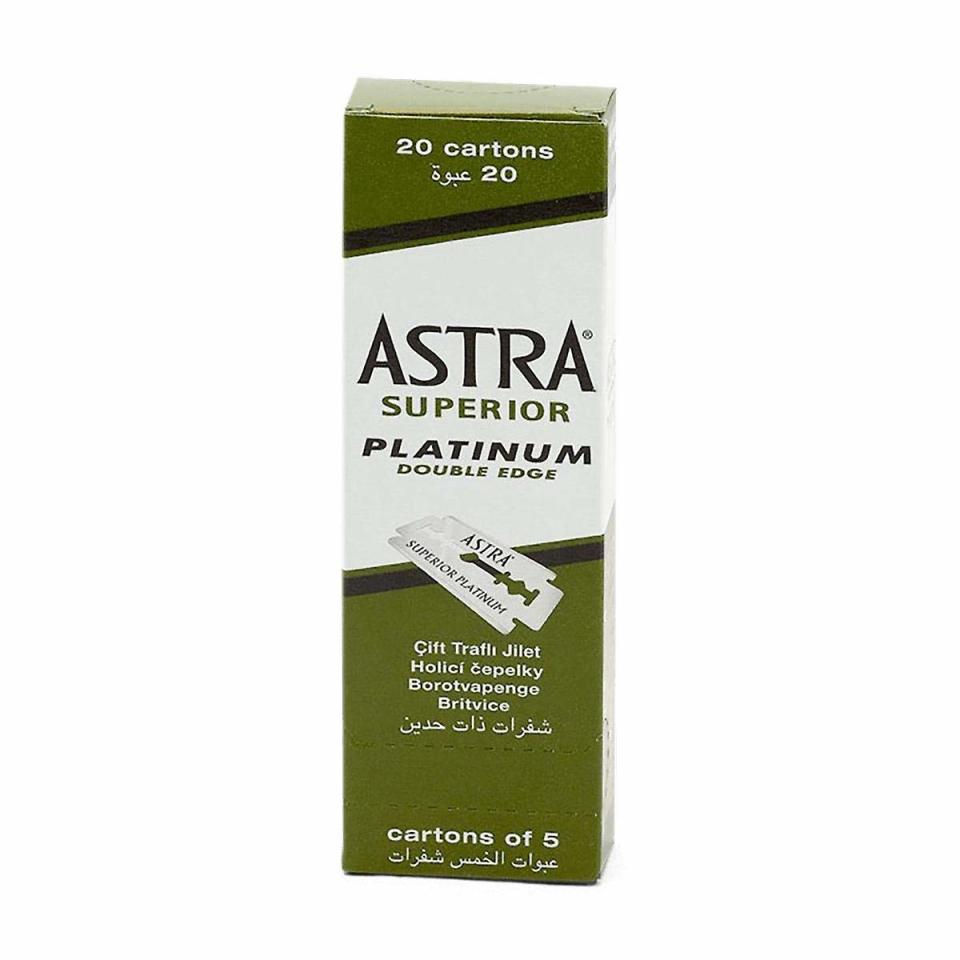
Astra Platinum Double Edge Safety Razor Blades
Price: $9.19 (orig. $9.99) 8% OFF
Buy Now
3. Marlowe No. 141 Shave Cream
BEST SHAVING CREAM
In recent testing of the top shaving creams, we found the Marlowe No. 141 Shave Cream’s blend of shea butter, coconut oil and willow bark extract delivers a close shave with minimal nicks, bumps and redness. We also love that it’s a non-foaming shaving cream, which we like more for safety razor shaving.
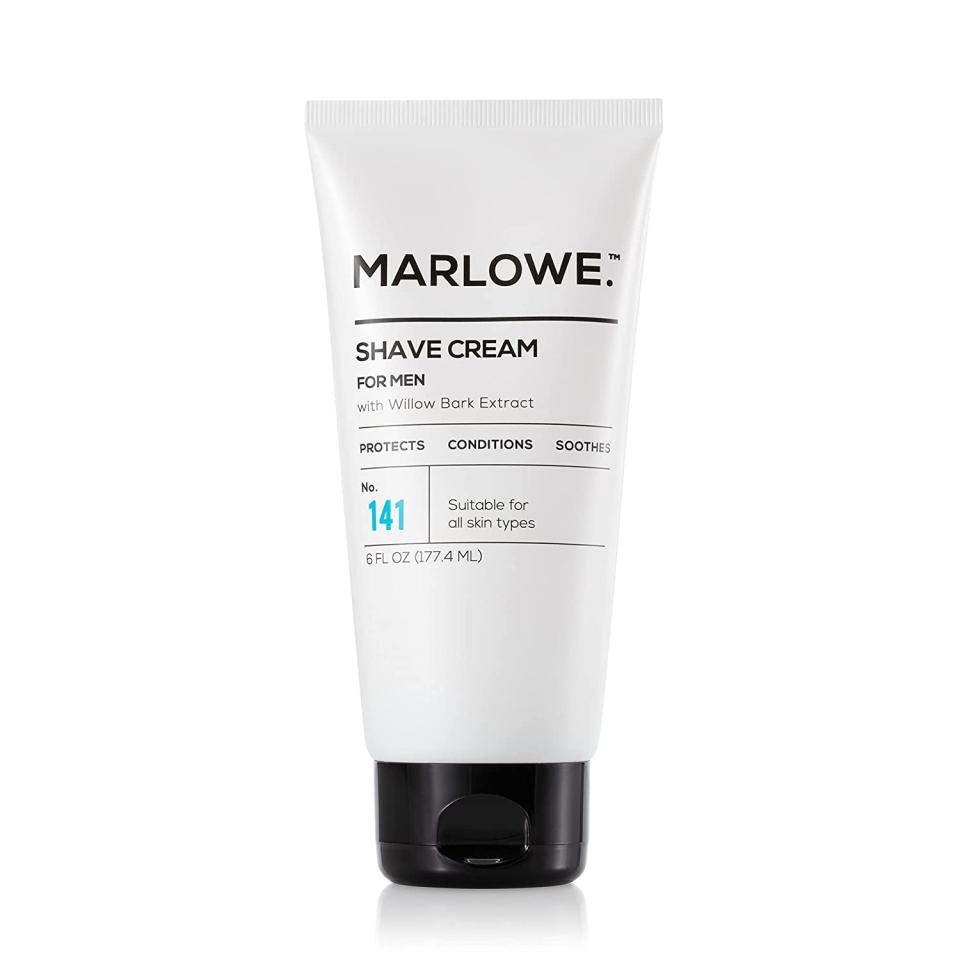
Marlowe No. 141 Shave Cream
4. NIVEA Men Sensitive Post Shave Balm
BEST AFTERSHAVE
The NIVEA Men Sensitive Post Shave Balm is simply the best starter aftershave balm. It’s crazy affordable and it soothes razor-burned skin immediately on contact with vitamin E and chamomile.
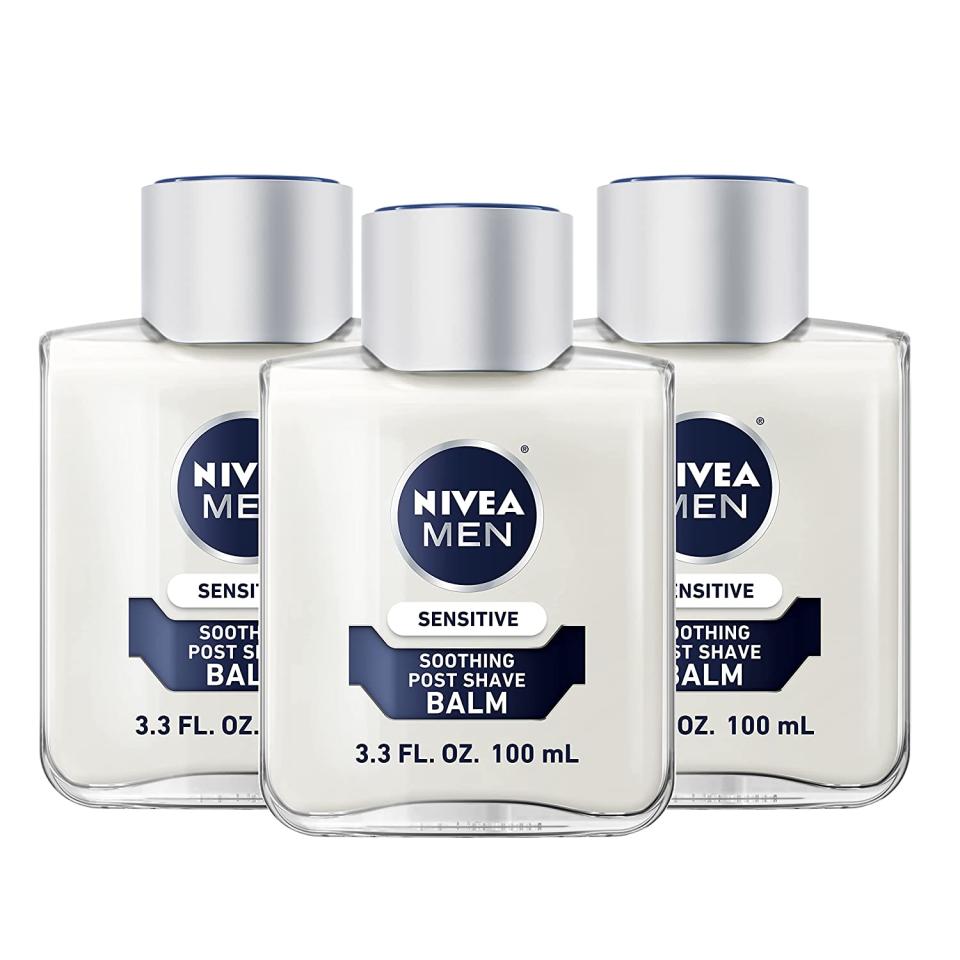
NIVEA Men Sensitive Post Shave Balm
Price: $15.69 (orig. $18.87) 17% OFF
Buy Now
More Top Deals from SPY
Best of SPY

